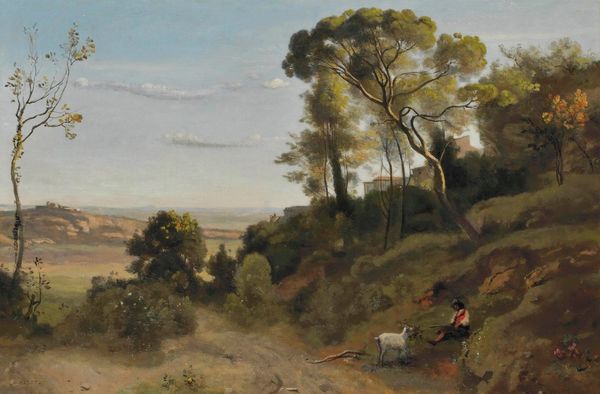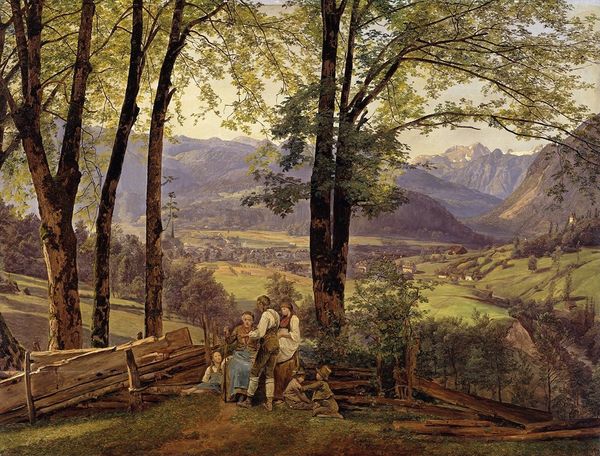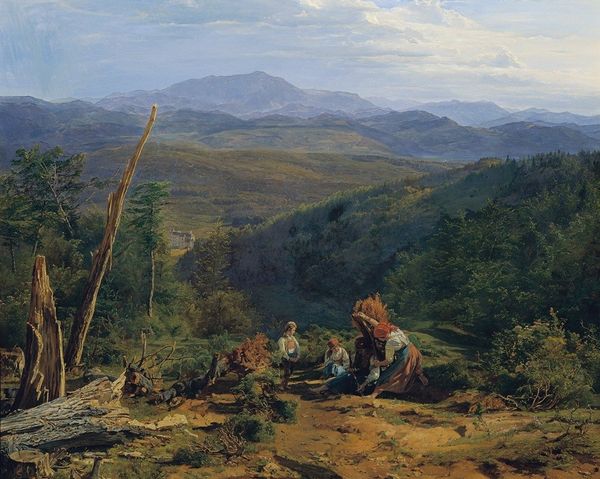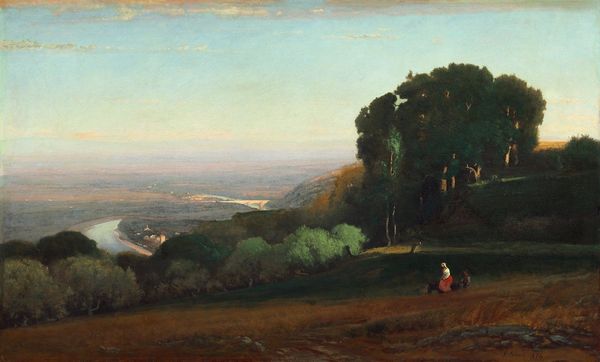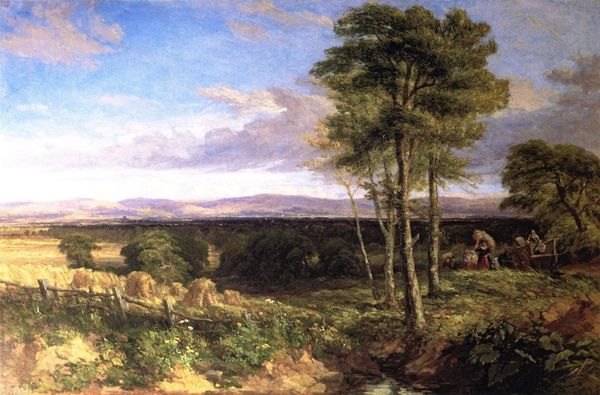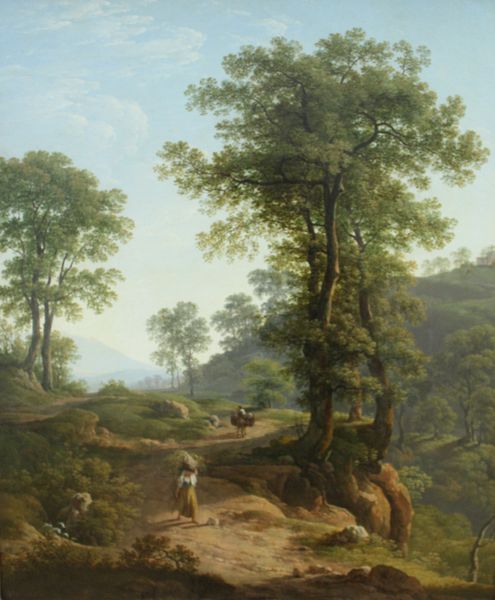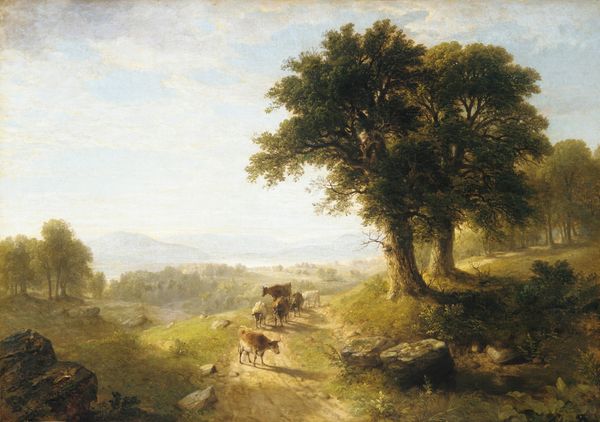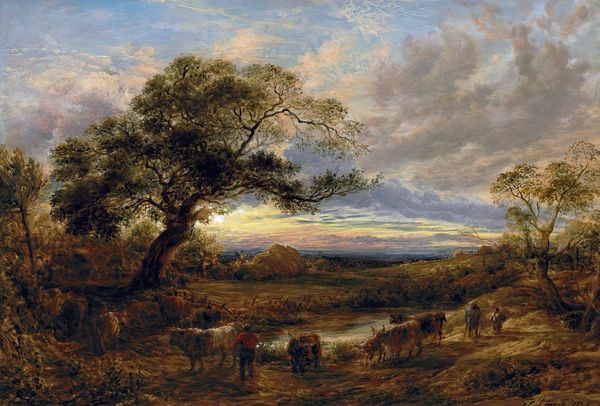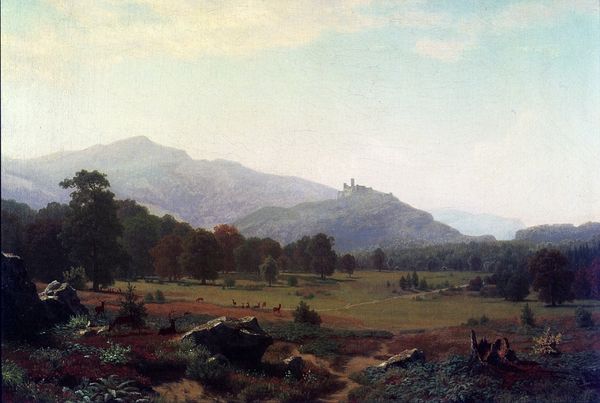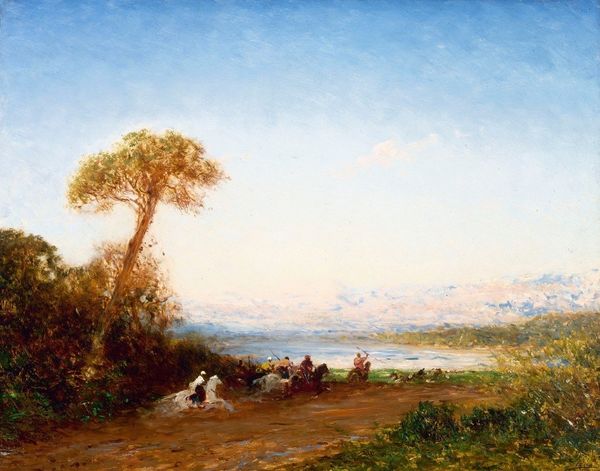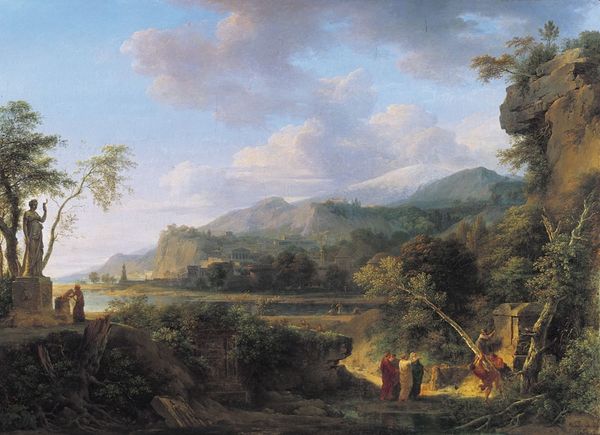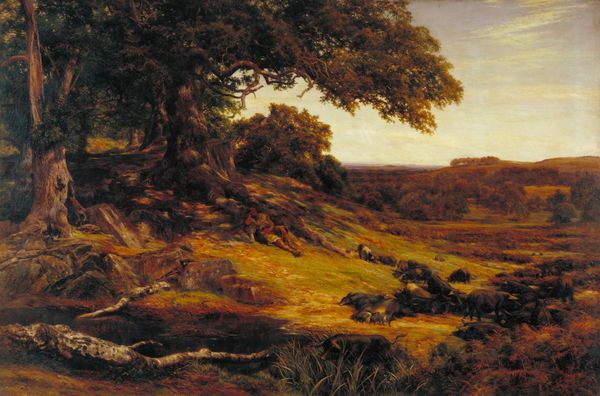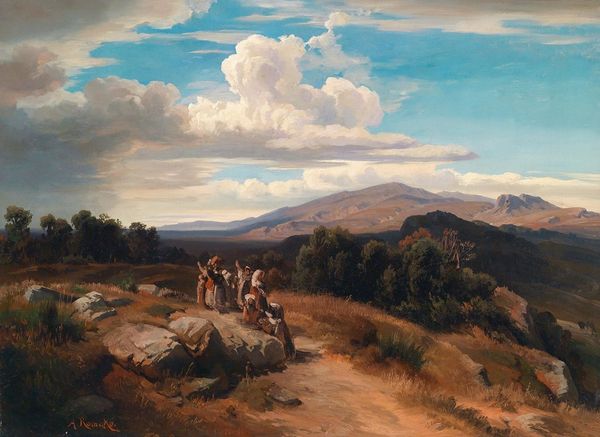
#
tree
#
sky
#
landscape
#
impressionist landscape
#
possibly oil pastel
#
nature
#
oil painting
#
acrylic on canvas
#
mountain
#
naturalistic tone
#
seascape
#
natural-landscape
#
animal drawing portrait
#
natural environment
#
watercolor
Copyright: Public domain
Editor: So, this is Ferdinand Georg Waldmüller's "Mountain landscape with the ruins of Liechtenstein in Mödling," painted in 1859. It feels… nostalgic, maybe even a little melancholic with those crumbling ruins in the distance. What do you see in this piece? Curator: The ruins resonate, don't they? They speak of a forgotten past, a power structure diminished by time and nature. But notice how the landscape isn't just a backdrop. The towering trees, the distant mountains – they represent the enduring strength of the natural world. Think of the visual symbolism at play: civilization versus nature, decay versus growth. Do you think Waldmüller is romanticizing ruin? Editor: Perhaps? I mean, it's very picturesque. The ruins add a sense of history, like a memory imposed on the present landscape. They definitely dominate and are far more present than people... almost unnoticeable at first. Curator: Exactly. What kind of emotional weight would the idea of Liechtenstein’s ruination have for someone living in that time and location? Consider it as part of a bigger visual language: light and shadow representing hope and regret, order and chaos. The symbol of the individual versus the societal. Waldmüller’s people at the forefront look towards that memory, with the enduring persistence of nature around them. How does that perspective reshape your feelings about it? Editor: It's fascinating to consider the layers of meaning within this seemingly simple landscape. I definitely appreciate it on a deeper level now. Curator: And it is this engagement, questioning, feeling that images and their symbols elicit that ensures their continued, vital existence. It’s a dialogue that stretches through time.
Comments
No comments
Be the first to comment and join the conversation on the ultimate creative platform.
